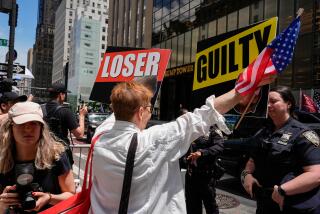Boys, girls and 9/11
It is time to consider a post-9/11 stupidity amnesty. Anybody who recalls the tidal wave of inane public speech that battered the country in the months after the terrorist attacks in New York, Washington, D.C. and Pennsylvania, during what one writer calls “that terrible period when it seemed pointless to talk about anything else but so hard to know what to say” must consider, with a mixture of personal and general embarrassment, that we’d all be better off with a global addendum to the social contract: Whatever moronic thing you said in the period of about six months to a year after 9/11 is officially stricken from the record. Offers to nuke Mecca? Forgotten. Silly chest-thumping? Never heard about it. Narcissistic palaver? Gone. Pointless “fiskings” of the “idiotarians” by their evolutionary opponents the “anti-idiotarians”? Disappeared! Goofball ivory-tower noodling? It never happened. I believe the best thing for all of us who endured, and each in our own way contributed to, the lunacy of that lunatic time would be a general stupid-speech amnesty.
Susan Faludi, author of the quote above about the “terrible period,” does not agree.
In her new book The Terror Dream, Faludi, the brilliant social critic and author of Backlash: The Undeclared War Against American Women and Stiffed: The Betrayal of the American Man depicts the U.S. reaction to the 9/11 attacks as an extended effort to reassert a cowboy/Indian/maiden narrative that has run through American history. More to the point, she engages in one of the most pitiless exhumations in recent memory. The entire canon of crazed, half-baked, twee, saccharine, self-deluding, foaming-at-the-mouth post-9/11 commentary is held up for our inspection, and it’s not a pretty sight.
Remember the National Review cover story with Secretary of Defense Donald Rumsfeld as Betty Grable? Faludi does. How about the bogus post-9/11 baby boom? Or the eerily vacuous elevation of Flight 93 widow Lisa Beamer to iconic status? The brief vogue of firefighter chic, which included the supposedly hot trend of chic New York women dating New York’s bravest a trend for which there was (surprise, surprise) never the slightest shred of documentation? How about the agility with which the commentariat moved away from the pan-Islamist maniacs who had actually perpetrated the attacks in order to focus on the real enemies: ironists, feminists and metrosexuals? Faludi holds up these and other media trendoids for close and devastating inspection.
The Terror Dream has already been reviewed by the L.A. Times, so this is not an attempt at a thumbs-up or down. While I enjoyed the book from start to finish, I believe it fails in its central project of proving that the hysterical reaction to 9/11 was about rebuilding a traditional American myth of male strength and female helplessness. Or rather, it succeeds in demonstrating its particulars, but fails to prove that this myth was as central to the post-9/11 period, or as important to recent history, as Faludi seems to think. While the point of this article is to argue against the idea that larger points can ever be found, it’s possible that there is something revealing in that failure.
In The Terror Dream, the author is not playing to her greatest strength: her skill as an interviewer and real-time observer. Faludi’s previous books ingeniously tracked the social madness that results when reality refuses to conform to gender-role mythologies; and the author’s shadowing of various liminal figures you don’t ordinarily associate with the gender wars was a major part of that effect. But with one or two exceptions, the documentation in The Terror Dream comes entirely from published sources; page after page of text strings together breathless, frequently hilarious, passages from newspaper accounts, television transcripts and what Faludi sniffily terms “the id-ruled realm of the Web.” A typical passage is this synopsis of a Larry King interview with Beamer:
“Are the children anxiously awaiting the arrival of their little brother or sister?” King wanted to know. “Did you send out Christmas cards this year?... I notice that pretty tree behind. Did Todd usually put the tree up?... So all the ornaments then or most of the ornaments have a special meaning for you?...This Christmas, doesn’t it make you sadder?....Are the kids going to get what they want for Christmas?...Now, how do the boys like having a little sister?...And you’re glad it was a girl?...Girls are different, are they not?...Does she sleep well at night?...What do you have, one boy in a bed and two in cribs now?...Oh, the little one is in a bed too?...”
It’s unfailingly entertaining to read, like an even more than usually deadpan piece from Spy or Suck or The New York Observer blown up to book length. But the net effect is to cover ground that looks awfully familiar for anybody who’s been in America these last few years.
The book’s larger point is that asserting the myth of protective men and protected women during troubled times is part of a long American tradition, of which the post-9/11 reaction is just the latest specimen. To make the case, Faludi devotes much of the book to a deep reading of the story of Army Pfc. Jessica Lynch, whose capture by Iraqi troops spawned a cottage industry of contradictory stories, none of which held up for very long, and all of which ultimately vanished into a postmodern haze. Along the way, Lynch was alternately portrayed as a fighting G.I. Jane, a plucky American kid and a damsel in distress who needed rescuing by special forces units from all four major service branches. It is this last version that interests Faludi, and she traces it back to the endlessly mutating stories of Mary Rowlandson and Hannah Duston, colonial-era women famous for having been captured by Indians and eventually gaining their freedom Rowlandson by negotiating her own release, Duston by butchering and scalping her captors (and probably a few innocents along with them). Rowlandson’s story and Duston’s, neither of which tracked with prevailing notions of male and female roles (the men in both women’s lives notably failed to protect them), went through substantial revisions in later years.
The idea here is that the constant revisionism of Lynch’s ordeal reveals a very old American pattern: Reality is frequently modified to fit into notions of male strength and female weakness, of heroic tough guys and princesses in jeopardy. With respect to the memory of Hannah Duston, there needs no ghost come from the grave to tell us this. That there is a long-standing mythology around heroic males and fainting females will surprise nobody and there’s nothing particularly American about it. If anything was striking about the disputed Lynch narrative it was how rapidly all attempts to place it into familiar gender terms fell apart. The blown-up story of her rescue melted away speedily, and at this late date there are few takers for the fake heroics of 2003. You could in fact make the case that Faludi has now, very late in the game, become another of the many petitioners seeking to turn Lynch’s story and for that matter Duston’s and Rowlandson’s to her own ends.
This goes for much of the book, which with one exception a very amusing look at the competing great-white-hunter narratives George Bush and John Kerry advanced in the 2004 election features hardly anything since 2003. The prisoner abuses at Abu Ghraib merit two sentences out of nearly 300 pages. I’d think the details of this case, with American soldiers absorbing the pop sociology of Raphael Patai and expressing some pretty advanced gender pathologies while spouting fake erudition about the sexual hang-ups of other cultures, would be of more than passing interest to Faludi’s study. And in a book that spends so much time on high-profile failures of men to live up to masculine stereotypes, where is Vice President Cheney’s hunting accident? For that matter, where are the pages on Matt Stone and Trey Parker’s Team America: World Police, in which one character describes the entire war on terrorism through an exploration of the male and female cloacal regions?
I suspect Faludi left these bits out for the same reason her subjects turned against those 9/11 widows who failed to conform to type because, for various reasons, they don’t fit into her story. The result is a revisiting of a series of public panics that were deconstructed long before Faludi got to them, in the service of a thesis that is interesting but ultimately not probative. In a book that’s all about unstable narratives, Faludi is advancing a few unstable narratives herself. For the book to have the necessary weight, you’ve got to believe that the post-9/11 myths had some greater meaning for the country, but while Faludi makes a few references to the policy failures that have accompanied the ascendance of mythology (that New York firefighters still lack proper equipment, for example, or that port security is still lax), it’s a stretch to connect these things to our national obsession with The Searchers. Having written on November 30, 2000 that invading Iraq was the one item guaranteed to be on the incoming Bush Administration’s agenda, I also have a hard time blaming that foreign policy disaster on post-9/11 hysteria; and in any event, to cite deep-seated American pathologies as explanations for the Iraq catastrophe is to excuse the very specific incompetence and stupidity of President Bush.
This raises a more disturbing possibility. We can generally agree that Bush’s attempt to thrust narrative and meaning onto 9/11 has not held up to reality. But maybe the counter-narratives don’t hold up either. Maybe there is no narrative of 9/11, no larger meaning to draw about our national delusions or the nature of Islam or expansionist foreign policy or American self-absorption or anything else just the bald facts of the events, and a bunch of interested parties trying, without success, to say what it all meant.
Tim Cavanaugh is web editor of The Times’ editorial page.
Send us your thoughts at [email protected].
More to Read
A cure for the common opinion
Get thought-provoking perspectives with our weekly newsletter.
You may occasionally receive promotional content from the Los Angeles Times.










